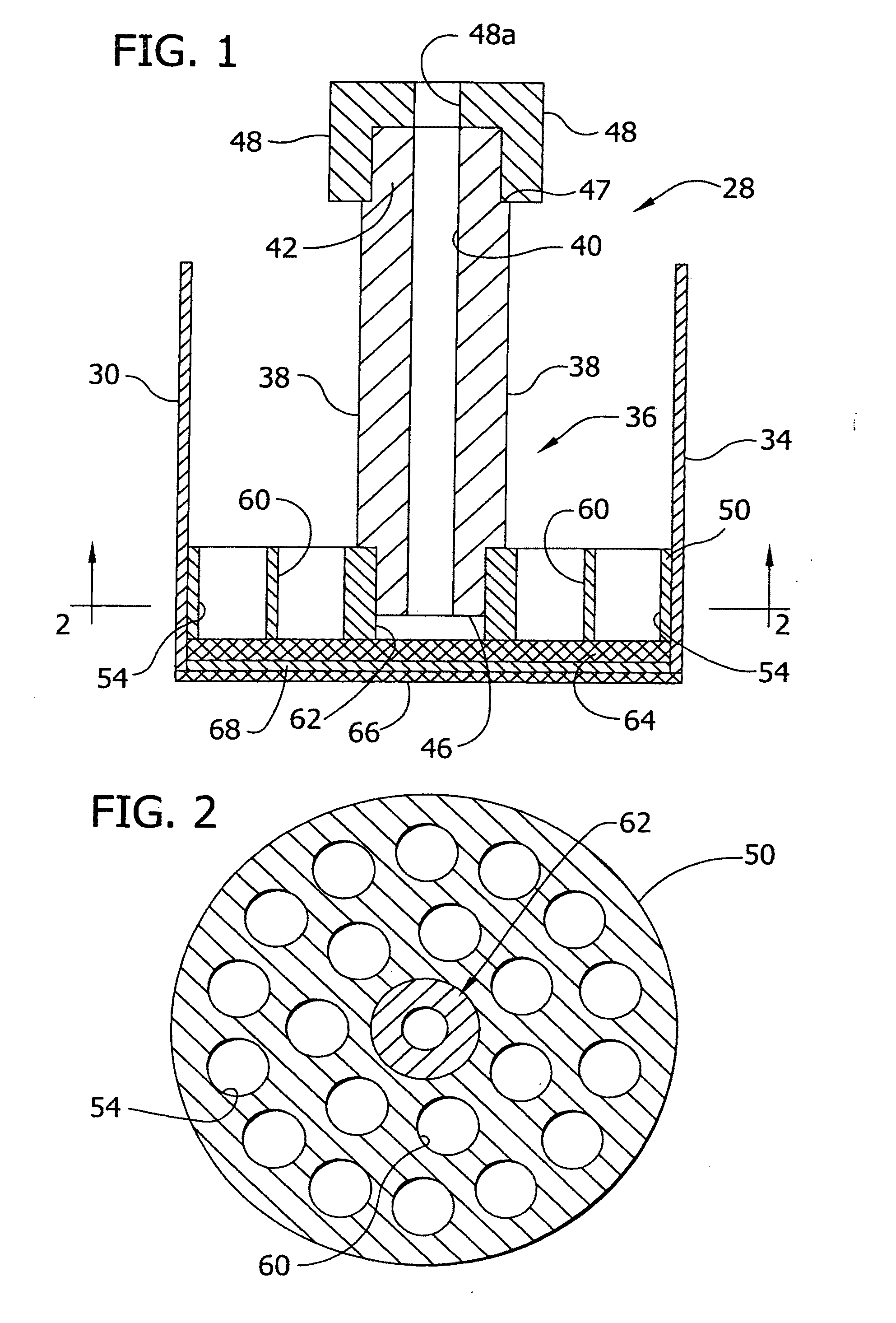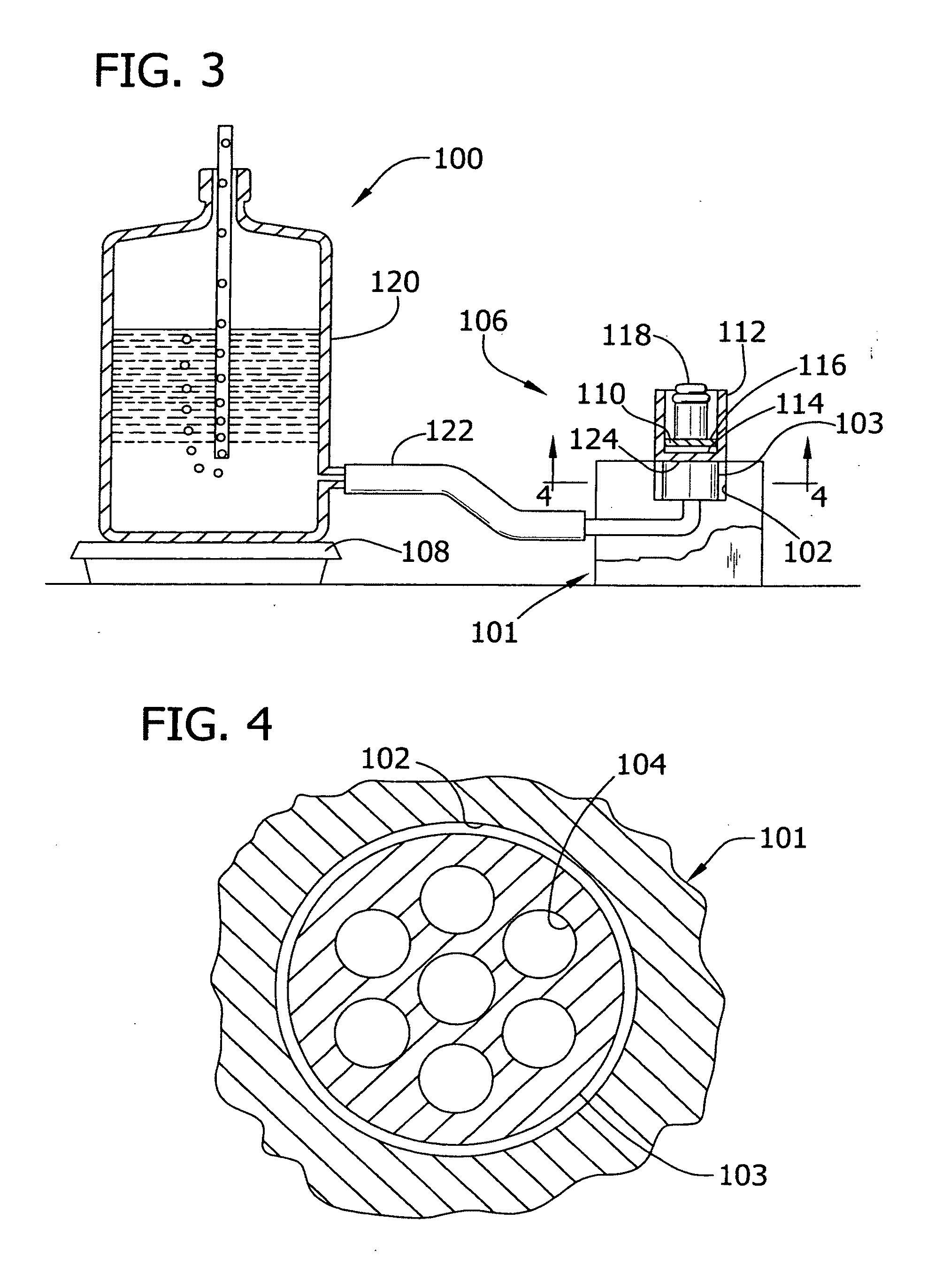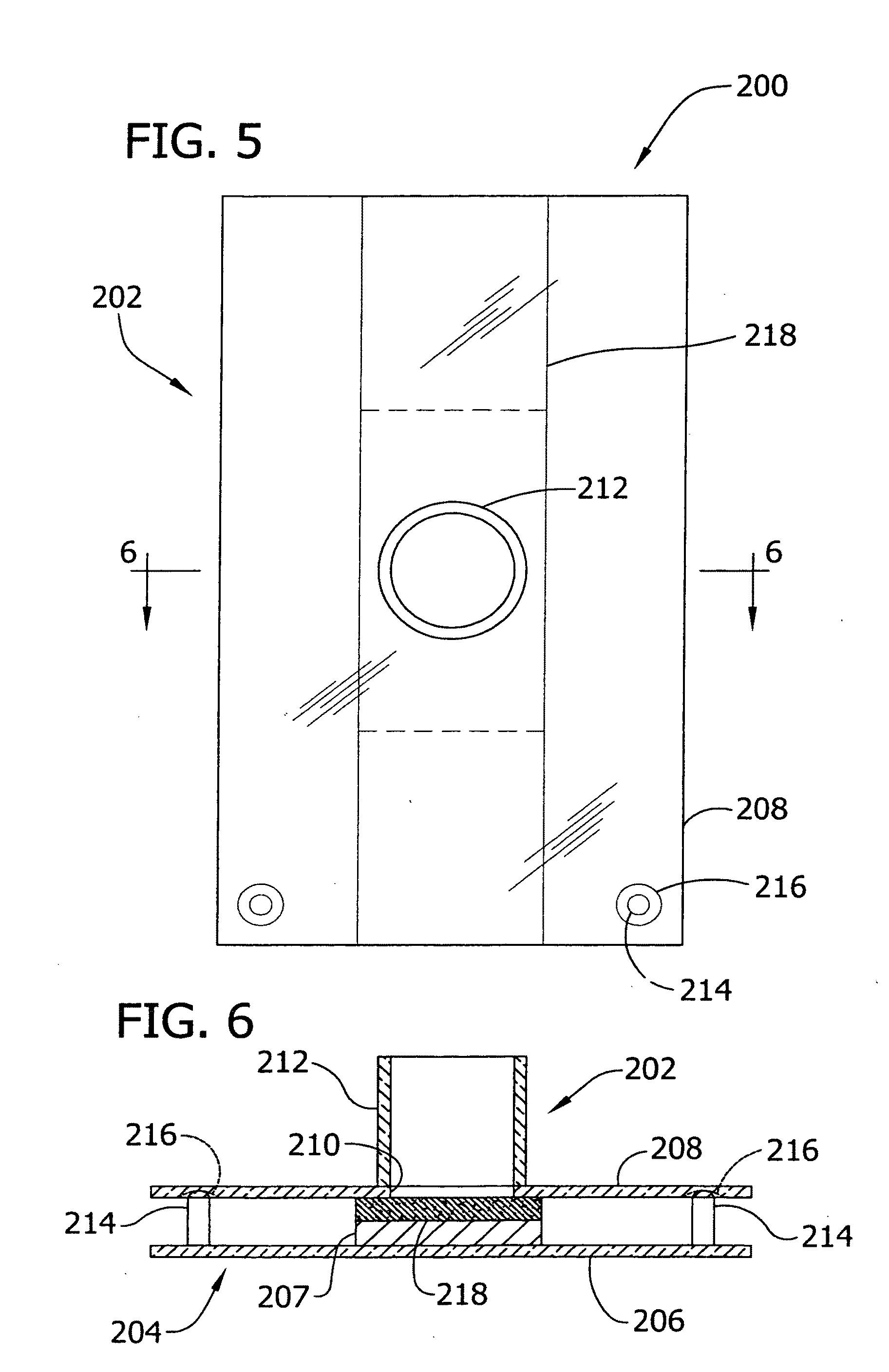Absorbent structure with superabsorbent material
a superabsorbent material and absorbent structure technology, applied in the field of absorbent structures, can solve the problems of insufficient intake rate of absorbent structures, leakage of absorbent structures during use, and decrease of the intake rate of such absorbent structures
- Summary
- Abstract
- Description
- Claims
- Application Information
AI Technical Summary
Benefits of technology
Problems solved by technology
Method used
Image
Examples
example 1
[0111]In an insulated, flat-bottomed reaction vessel, 1866.7 g of 50% NaOH was added to 3090.26 g of distilled water and cooled to 25° C. 800 g of acrylic acid was then added to caustic solution and the solution again cooled to 25° C. A second solution of 1600 g of acrylic acid containing 9.6 g of polyethylene glycol (300) diacrylate was then added to the first solution, followed by cooling to 15° C., the addition of 9.6 g of monoallyl ether acrylate with 10 moles of ethoxylation, and additional cooling to 5° C., all while stirring. The monomer solution was then polymerized with a mixture of 100 ppm hydrogen peroxide, 200 ppm azo-bis-(2-amidino-propene)dihydrochloride, 200 ppm sodiumpersulfate and 40 ppm ascorbic acid (all aqueous solutions) under adiabatic conditions and held near Tmax for 25 minutes. The resulting gel was chopped and extruded with a Hobarth 4M6 commercial extruder, followed by drying in a Procter & Schwartz Model 062 forced air oven at 175° C. for 10 minutes with ...
example 2
[0112]Similar to Example 1 except 12.0 g of polyethylene glycol (300) diacrylate and 12.0 g of monoallyl ether acrylate with 10 moles of ethoxylation were used in the monomer solution.
example 3
[0113]In an insulated, flat-bottomed reaction vessel, 1866.7 g of 50% NaOH was added to 3090.26 g of distilled water and cooled to 25° C. 800 g of acrylic acid was then added to caustic solution and the solution again cooled to 25° C. A second solution of 1600 g of acrylic acid containing 120 g of 50 wt. % methoxypolyethyleneglycol(750) monomethacrylate in acrylic acid and 6.0 g of trimethylolpropanetriacrylate with 3 moles of ethoxylation were then added to the first solution, followed by cooling to 15° C., the addition of 10.8 g of allyl ether acrylate with 10 moles of ethoxylation, and additional cooling to 5° C., all while stirring. The monomer solution was then polymerized with a mixture of 100 ppm hydrogen peroxide, 125 ppm azo-bis-(2-amidino-propene) dihydrochloride, 300 ppm sodiumpersulfate and 30 ppm sodium erythorbate (all aqueous solutions) under adiabatic conditions and held near Tmax for 25 minutes. The resulting gel was chopped and extruded with a Hobarth 4M6 commercia...
PUM
| Property | Measurement | Unit |
|---|---|---|
| weight percent | aaaaa | aaaaa |
| weight percent | aaaaa | aaaaa |
| weight percent | aaaaa | aaaaa |
Abstract
Description
Claims
Application Information
 Login to View More
Login to View More - R&D
- Intellectual Property
- Life Sciences
- Materials
- Tech Scout
- Unparalleled Data Quality
- Higher Quality Content
- 60% Fewer Hallucinations
Browse by: Latest US Patents, China's latest patents, Technical Efficacy Thesaurus, Application Domain, Technology Topic, Popular Technical Reports.
© 2025 PatSnap. All rights reserved.Legal|Privacy policy|Modern Slavery Act Transparency Statement|Sitemap|About US| Contact US: help@patsnap.com



